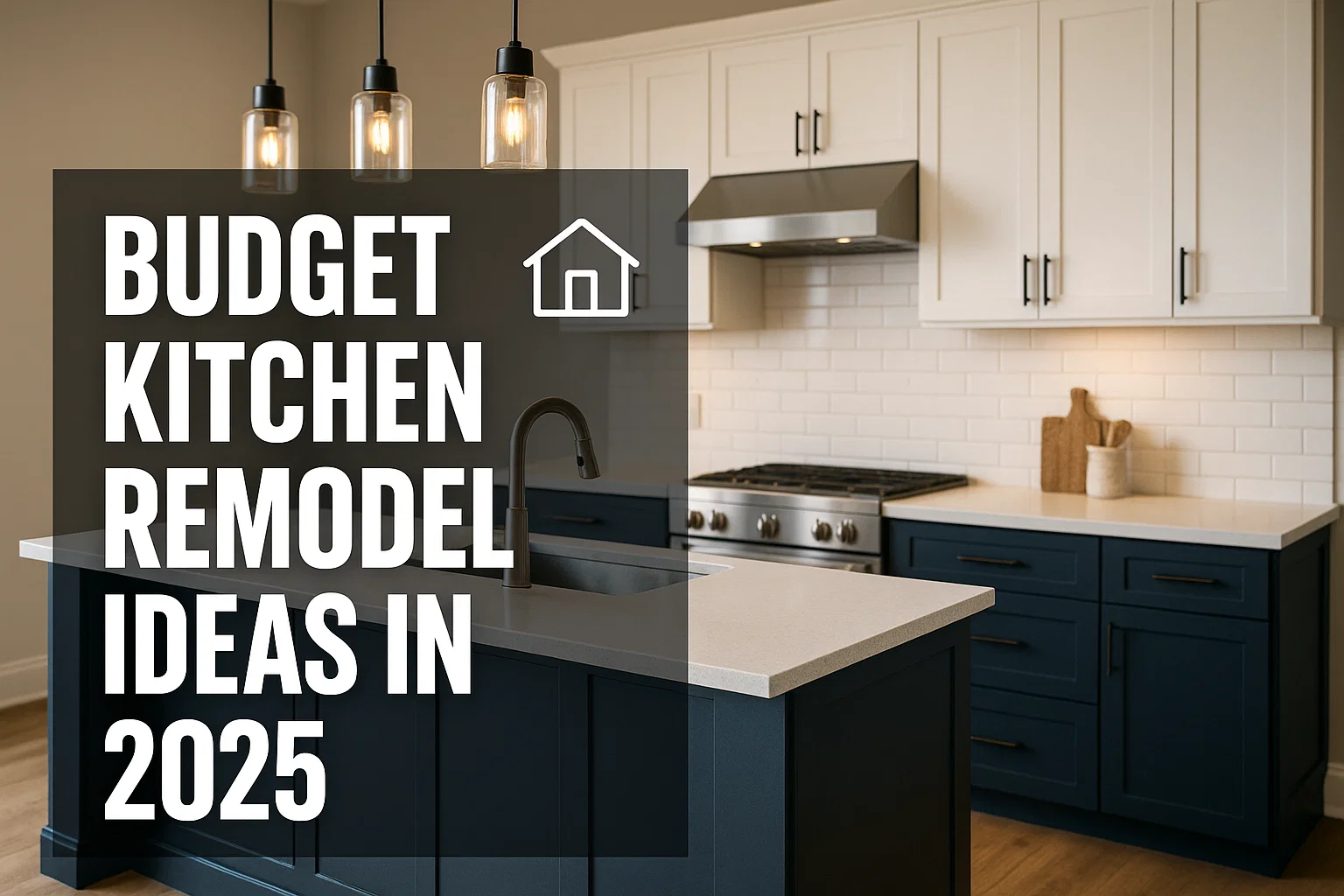Planning a home remodeling or renovation project can be an exciting yet daunting task. Whether you’re dreaming of a brand-new kitchen, looking to add an ADU (Accessory Dwelling Unit) to your property, or simply refreshing the overall structure of your home, proper budgeting is key to ensuring the project runs smoothly. At A to Z, we understand the importance of careful planning and financial preparation. In this blog post, we’ll guide you through practical steps to create a realistic home remodeling budget, helping you stay on track and avoid any surprises along the way.
Why Budgeting for a Remodel is Crucial
Home renovations are a significant investment. While the idea of revamping a space can be thrilling, without a solid budget, it can quickly turn overwhelming. Establishing a well-thought-out home remodeling budget not only helps you prioritize your spending but also ensures that you don’t end up with unfinished work or unexpected costs. Whether you’re remodeling a kitchen, building an ADU, or taking on general construction, a budget acts as your roadmap to success.
Step 1: Understand the Scope of Your Project
Before you dive into budgeting, it’s essential to have a clear understanding of the project scope. The size and complexity of your remodel will directly affect the costs. Start by asking yourself:
- What is the main goal of the project? Are you adding extra space with an ADU or upgrading your kitchen to better meet your needs?
- How extensive is the remodel? Are you doing a minor update or a full renovation that involves structural changes?
The more precise you are about the work to be done, the better your budget will reflect the actual costs. For example, an ADU construction might involve permits, utility hookups, and other specialized tasks that would require more funds compared to a simple kitchen update.
Step 2: Establish a Realistic Budget Range
When it comes to home remodeling budgets, it’s important to set a range, not just one fixed amount. A good rule of thumb is to allocate around 10% to 20% more than your initial estimate to account for unexpected costs.
Example:
- Kitchen Remodeling: A mid-range kitchen remodel might cost between $20,000 and $50,000, depending on the size, materials, and appliances. For a budget-friendly remodel, you might aim for $15,000, but it’s wise to have extra set aside for contingencies.
- ADU Construction: Building an ADU can range from $100,000 to $300,000, depending on its size, design, and amenities. With the complexity of such a build, you’ll want to keep 10-15% of the budget reserved for unforeseen issues.
Creating a flexible budget will allow you to handle surprises without derailing your plans.
Step 3: Break Down the Budget by Categories
Once you have a range, it’s time to break your home remodeling budget into specific categories. This helps you see where the money is going and avoid overspending in any one area. Here’s a general breakdown of common remodeling projects:
1. Labor Costs
Labor often represents the bulk of the cost in any renovation project. Contractors, subcontractors, electricians, plumbers, and other professionals will charge for their time and expertise. When budgeting, factor in the following:
- General Contractor Fees: These can vary but generally range from 10% to 20% of your total project cost.
- Specialized Labor: For a kitchen remodel, you may need plumbers for sink installations or electricians for lighting upgrades. These costs can add up, so plan accordingly.
2. Materials and Supplies
Material costs can vary widely depending on the quality and type of materials you choose. For example, you could opt for mid-range countertops or high-end options like granite or marble for a kitchen renovation.
- Kitchen Remodeling: Cabinets, countertops, flooring, and appliances typically take up a large chunk of the budget.
- ADU Construction: Materials for building walls, roofing, flooring, and windows are all significant line items.
Make sure to get accurate estimates from suppliers and keep track of any price fluctuations.
3. Permits and Fees
Depending on the scope of your project, you might need various permits to comply with local building codes. If you’re doing a major remodel like an ADU construction or a complete kitchen overhaul, expect to pay for permits, inspections, and possibly impact fees (especially if adding square footage). Always check with your contractor about what permits are required for your specific project.
4. Contingency Fund
As mentioned earlier, a contingency fund is essential to account for unforeseen circumstances like structural issues, changes in design, or material shortages. A good rule is to set aside 10-15% of your total budget for contingencies. This fund will help you navigate any unexpected problems without having to halt the project.
Step 4: Factor in Hidden Costs
While major expenses like labor, materials, and permits are relatively easy to anticipate, some costs can sneak up on you. Be sure to include:
- Furniture and Decor: If your remodel includes a living space or kitchen, you might need new furniture, light fixtures, or decor. This could add thousands to your budget.
- Temporary Living Arrangements: For larger remodels (like building an ADU or a full kitchen overhaul), you may need to rent a temporary space or pay for a hotel during the renovation.
- Upgrades and Add-ons: During the renovation, you might fall in love with a specific feature—say, a fancy backsplash in the kitchen or custom cabinetry. While these upgrades can improve your home, they will also increase costs.
Be mindful of these potential costs to avoid budget creep.
Step 5: Get Multiple Quotes and Compare
Don’t settle for the first estimate you receive. Always gather quotes from at least three contractors for your project. While the cheapest option isn’t always the best, getting multiple bids helps you better understand the market rate for labor and materials. When comparing estimates, make sure to:
- Ask for detailed breakdowns: Ensure each quote includes a breakdown of labor, materials, permits, and other costs.
- Check references and past work: Look at contractor reviews and their portfolio to ensure they have experience with the type of remodel you want.
Step 6: Track and Monitor Expenses
Once the project starts, it’s essential to keep track of expenses to ensure you’re staying within budget. Consider using budgeting software or an Excel spreadsheet to monitor every payment. Tracking can help you catch overspending early and make adjustments to stay within your home remodeling budget.
Conclusion
Budgeting for a home remodeling project isn’t a one-size-fits-all process, but with the right approach, you can ensure a successful outcome without financial headaches. Whether you’re remodeling your kitchen, adding an ADU to your property, or tackling a general construction project, being mindful of every aspect of the budget is crucial. By following these steps and staying proactive in managing costs, Atozgc ensures you’ll be able to enjoy your newly renovated space without worrying about financial stress.






